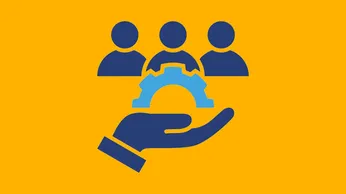How Rewards Program Statistics Drives Engagement and Business Growth
Rewards program statistics help brands uncover what truly drives loyalty. From redemption behavior to personalization and retention, this blog explores how leading businesses use loyalty data to reduce churn, grow revenue, and improve experiences.
On this page
In 2024, Walgreens enhanced its myWalgreens loyalty program by introducing personalized health insights and behavior-based incentives. Despite the initial enthusiasm, the company observed that many members were not redeeming health-related offers, and engagement varied across age groups.
By analyzing rewards program statistics, Walgreens identified these gaps and adjusted its communication strategies and reward offerings to better cater to different customer segments.
This example underscores the critical role of rewards program statistics. They provide insights into customer behavior, preferences, and engagement patterns, enabling brands to refine their loyalty programs for better effectiveness.
Platfoms like Loyalife simplify this kind of analysis by enabling brands to track real-time reward engagement, segment users by behavior, and automate updates to rewards and messaging—based on what actually drives action.
In this blog, we'll delve into the significance of rewards program statistics, exploring why they matter, how to correctly interpret them, and how brands can leverage these insights to create more impactful loyalty programs.
The rise of rewards programs across industries
Rewards programs have evolved from simple punch cards to sophisticated, data-driven ecosystems. Once dominated by retail brands, rewards programs have now found a firm place in industries ranging from travel and hospitality to financial services, technology, wellness, and even healthcare.
Here's why they hold such significance in today’s market:
1. Adoption trends across industries
Today, customer loyalty is a business imperative not just a marketing initiative. Brands across sectors are investing in loyalty solutions to reduce churn, increase lifetime value, and personalize the customer experience. Some key trends driving cross-industry adoption include:
- Hospitality and travel: Airlines and hotel chains like Delta SkyMiles and Marriott Bonvoy have continued to refine tier-based programs to reward frequent customers with exclusive access, upgrades, and convenience perks.
- Financial services: Credit card companies now use rewards as a primary customer acquisition and retention tool. American Express, for example, offers extensive point-based ecosystems that integrate with travel, dining, and shopping.
- Technology and streaming: Companies like Apple, Amazon, and Spotify incorporate loyalty in the form of membership perks (such as exclusive content, premium access, or member-only pricing) that keep users inside their ecosystem.
- Healthcare and wellness: Programs like Walgreens’ myWalgreens reward not only purchases but also healthy behaviors, like tracking steps or managing prescriptions, integrating loyalty with wellbeing.
This expansion is being fueled by the growing importance of customer data and the demand for personalized, value-driven experiences.
No matter the industry is, the ability to tailor rewards and experiences to distinct audience groups is critical.
With Loyalife, brands across retail, wellness, finance, and tech can configure tiered programs, gamify incentives, and deliver personalized loyalty journeys that align with industry-specific needs.
2. Customer retention is more cost-effective than acquisition
Acquiring a new customer can be up to seven times more expensive than retaining an existing one. Moreover, increasing customer retention by just 5% can lead to profit increases ranging from 25% to 95%. This underscores the importance of focusing on existing customers through loyalty programs to reduce churn and protect revenue streams.
3. Loyalty programs drive revenue growth
Customers enrolled in loyalty programs tend to spend more than non-members. In fact, loyalty program members generate 12–18% more incremental revenue per year compared to non-members. Additionally, 80% of a company's future revenue is expected to come from just 20% of its existing customers, highlighting the significant impact of loyal customers on business growth.
4. Personalization enhances competitive differentiation
Modern loyalty programs leverage data to offer personalized experiences, which are increasingly important to consumers. According to Deloitte's 2024 Consumer Loyalty Survey, personalized experiences and rewards were the third most important attribute for surveyed consumers. Brands that effectively use customer data to tailor interactions can differentiate themselves in crowded markets.
5. Reward programs foster emotional connections
Customers are more likely to remain loyal to brands that make them feel valued. Programs offering relevant rewards, birthday bonuses, early access, or VIP experiences help create emotional ties that are difficult for competitors to replicate. In fact, 88% of customers who highly trust a brand are more likely to buy from that brand again.
6. Data from rewards programs informs smarter decisions
Interactions within loyalty programs generate valuable customer data. This data can inform product strategies, marketing campaigns, and customer experience improvements.
7. Integration with digital platforms
Modern rewards programs are increasingly embedded into digital interfaces:
- Mobile apps: Consumers now expect loyalty features to be integrated into brand apps where they can earn, track, and redeem rewards in real time.
- Digital wallets: Programs that sync with platforms like Apple Wallet or Google Pay offer frictionless redemption and in-store integration.
- E-commerce: Online-first brands use loyalty data to deliver real-time offers, cross-sell recommendations, and personalized incentives based on browsing and purchase behavior.
This digital-first shift is making loyalty programs more accessible and convenient, especially for younger, tech-savvy audiences.
Rewards programs are widely adopted, but usage paints a more complex picture:
-Over 90% of consumers are enrolled in at least one loyalty or rewards program, demonstrating broad acceptance across demographics. (Source: Accenture, 2022)
- A paypal article notes that while the average U.S. consumer is a member of 16.6 loyalty programs, they actively engage with only about half.
These numbers reflect both a tremendous opportunity and a significant challenge:
-Consumers are open to joining programs, especially when the sign-up process is quick or incentivized.
-However, most programs struggle to maintain engagement after enrollment, often due to a lack of personalization, relevance, or perceived value.
What this means for brands:
The high enrollment rate shows that customers are willing to participate in loyalty programs—but staying top-of-mind and motivating continued interaction requires more than just points. It demands:
-Ongoing communication through preferred channels
-Dynamic rewards tailored to evolving needs
-Streamlined mobile and omnichannel experiences
-Regular evaluation of what members actually use versus what is offered
In short, as rewards programs become more popular, the bar for meaningful engagement is rising. Brands that treat loyalty as a static feature risk becoming background noise in a crowded marketplace.
Why rewards program statistics matter
In a loyalty landscape driven by experience, personalization, and value, data has become the currency of effective rewards programs. Tracking the right statistics doesn’t just help you measure success, it helps you improve it.
By understanding how customers engage with rewards, what drives redemption, and where drop-offs occur, businesses can make smarter, faster, and more impactful decisions.
Here’s how rewards program statistics directly contribute to stronger customer loyalty:
1. Identify what truly motivates your customers
Statistics around reward preferences, redemption rates, and engagement patterns reveal which incentives resonate most. This helps you double down on rewards that encourage repeat purchases while phasing out those that go unused.
2. Personalize experiences based on behavior
Analyzing usage data enables you to segment customers by activity, tier, or frequency. With these insights, you can personalize offers, messages, and rewards—making each customer feel seen and understood, which deepens loyalty.
3. Spot drop-off points in the loyalty journey
Redemption gaps, inactive members, or tier stagnation can indicate friction in the program. By monitoring statistics related to engagement decline, you can proactively fix issues and re-engage lapsed members.
4. Benchmark performance against industry standards
Tracking key metrics like customer lifetime value, participation rate, or average redemption frequency allows you to see how your program compares to others in your industry. This benchmarking can guide goal setting and prioritization.
5. Forecast trends and plan proactively
Historical data on seasonal spikes, popular rewards, or redemption cycles enables better forecasting. You can plan campaigns that align with customer behavior, ensuring you always stay ahead of demand.
6. Prove the ROI of your loyalty program
Accurate tracking of metrics like incremental revenue from members or increased order frequency provides tangible proof of your program’s effectiveness. This not only secures internal buy-in but also justifies future investments in loyalty innovation.
Understanding these loyalty statistics is only part of the equation, the next challenge is using them to build real-time, adaptive customer experiences. Loyalife can help brands translate data into action, with tools for behavioral segmentation, personalized rewards, and continuous program optimization.
Common pitfalls in interpreting rewards program statistics
Tracking rewards program data is essential—but only when it's interpreted with the right context and purpose. Many brands collect a wide array of metrics but fall short in translating them into actionable insights.
Misreading or misusing loyalty data can lead to ineffective strategies, missed opportunities, and poor customer experiences. Here are some of the most common pitfalls to avoid:
1. Over-relying on enrollment numbers
Many programs tout growing member bases as a sign of success. However, a large number of sign-ups doesn’t guarantee engagement or loyalty. Enrollment is only the starting point.
Why it’s problematic: Focusing solely on how many people join without tracking how many actually interact with the program creates a false sense of effectiveness. You might be celebrating a program that, in practice, fails to drive behavior.
How to avoid it: Pair enrollment data with active participation metrics—like redemption rates, engagement frequency, and tier progression—to assess real value.
2. Ignoring redemption behavior
Brands often overlook how often rewards are redeemed, which rewards are favored, or how easy the redemption process is.
Why it’s problematic: Low redemption rates could mean rewards lack relevance or are too difficult to access. High unredeemed balances may also indicate breakage, leading to dissatisfaction.
How to avoid It: Regularly audit redemption stats. Look at reward preferences by segment and streamline redemption experiences. Use customer feedback to improve reward relevance and accessibility.
3. Focusing only on short-term sales uplift
Measuring loyalty success solely by increases in short-term revenue or transactions misses the bigger picture.
Why it’s problematic: A loyalty program’s true value lies in long-term retention, repeat purchases, and advocacy, not just one-off spikes in sales.
How to avoid it: Track metrics like customer lifetime value (CLV), repeat purchase rate, and customer retention rate over time. Use these to measure sustained impact.
4. Failing to connect satisfaction scores to business outcomes
Many loyalty programs collect customer satisfaction data but fail to connect it to behavioral or financial metrics.
Why it’s problematic: If you don’t link satisfaction to tangible outcomes like retention, NPS, or purchase frequency, you miss insights into what actually drives loyalty.
How to avoid it: Analyze satisfaction scores alongside engagement and spending data. For instance, track whether customers who rate your program highly also redeem more or stay longer.
5. Overlooking segmentation in analysis
Viewing loyalty data in aggregate ignores the nuances across customer groups.
Why it’s problematic: You might miss underperformance in key segments—like younger shoppers disengaging due to lack of mobile rewards or VIP members feeling unrewarded.
How to avoid it: Segment data by age, region, loyalty tier, or behavior. Tailor strategies for each group based on their unique preferences and patterns.
6. Using vanity metrics without context
Metrics like app downloads, page views, or number of emails sent are sometimes mistaken for success indicators.
Why it’s problematic: These numbers look impressive but don’t always correlate with meaningful engagement or business value.
How to avoid it: Prioritize metrics that link directly to customer behavior and business impact, such as redemption rate, repeat purchase frequency, or NPS by cohort.
Turn loyalty insights into real growth
Rewards programs are no longer about simply offering points or discounts, they’re strategic assets powered by data. As we’ve seen from examples like Walgreens and explored throughout this blog, rewards program statistics offer critical visibility into what customers value, where engagement stalls, and how loyalty can be deepened over time.
But to fully capitalize on these insights, brands need more than spreadsheets and dashboards. They need platforms that translate data into personalized, measurable, and scalable action.
How Loyalife helps brands act on loyalty insights:
- Behavior-based segmentation: Automatically segment users by actions, preferences, and engagement history to deliver hyper-relevant rewards.
- Real-time performance tracking: Monitor reward redemptions, drop-off points, and satisfaction indicators in one place to make faster, data-informed decisions.
- Modular program design: Easily build, test, and update your loyalty program structure to adapt to market trends and user behavior without starting from scratch.
- Cross-channel personalization: Deliver consistent and tailored loyalty experiences across app, web, in-store, and email, all powered by real-time data.
Explore how Loyalife can help you personalize at scale, increase engagement, and turn data into loyalty-driven growth.
Talk to our team today.















